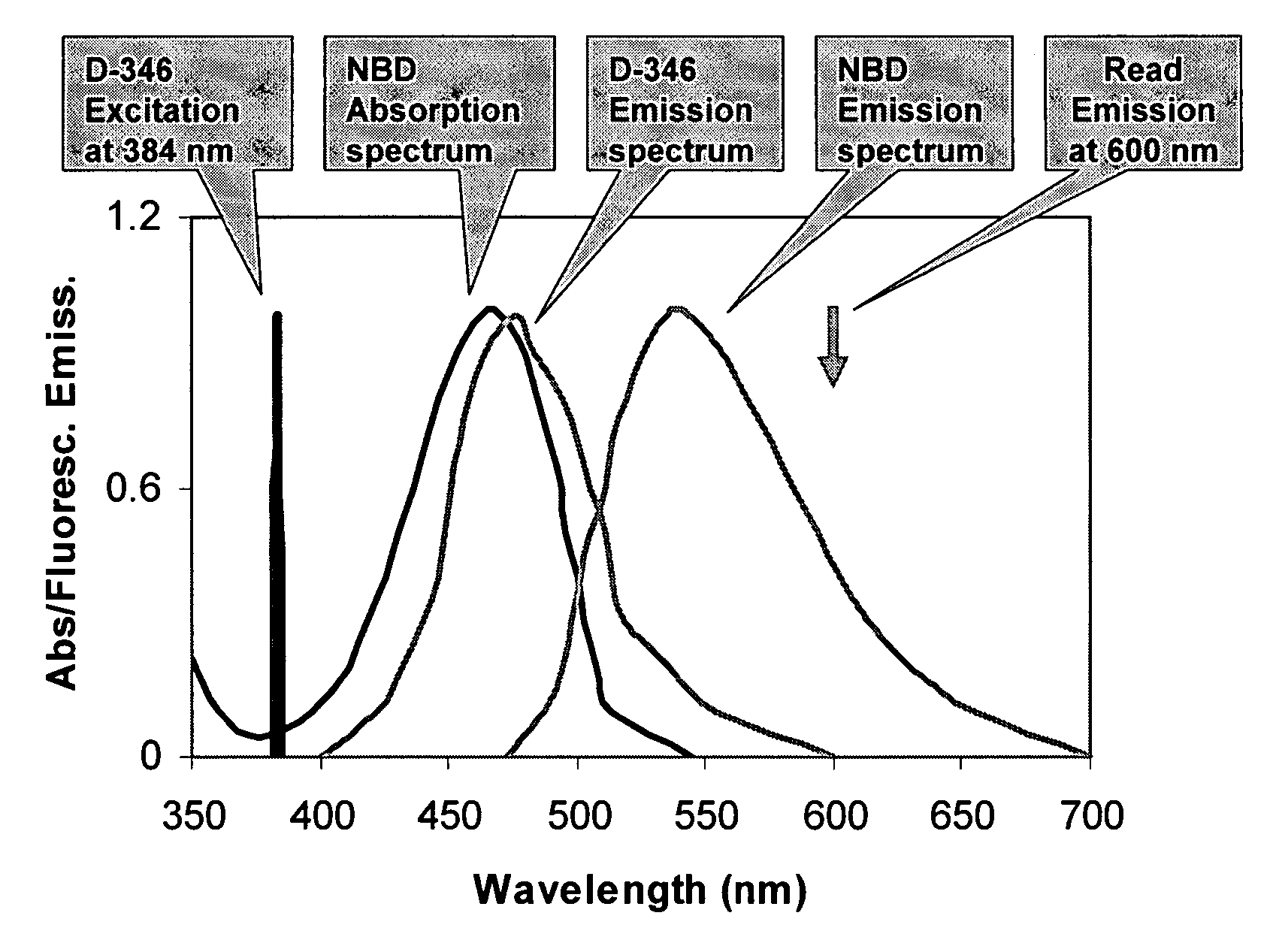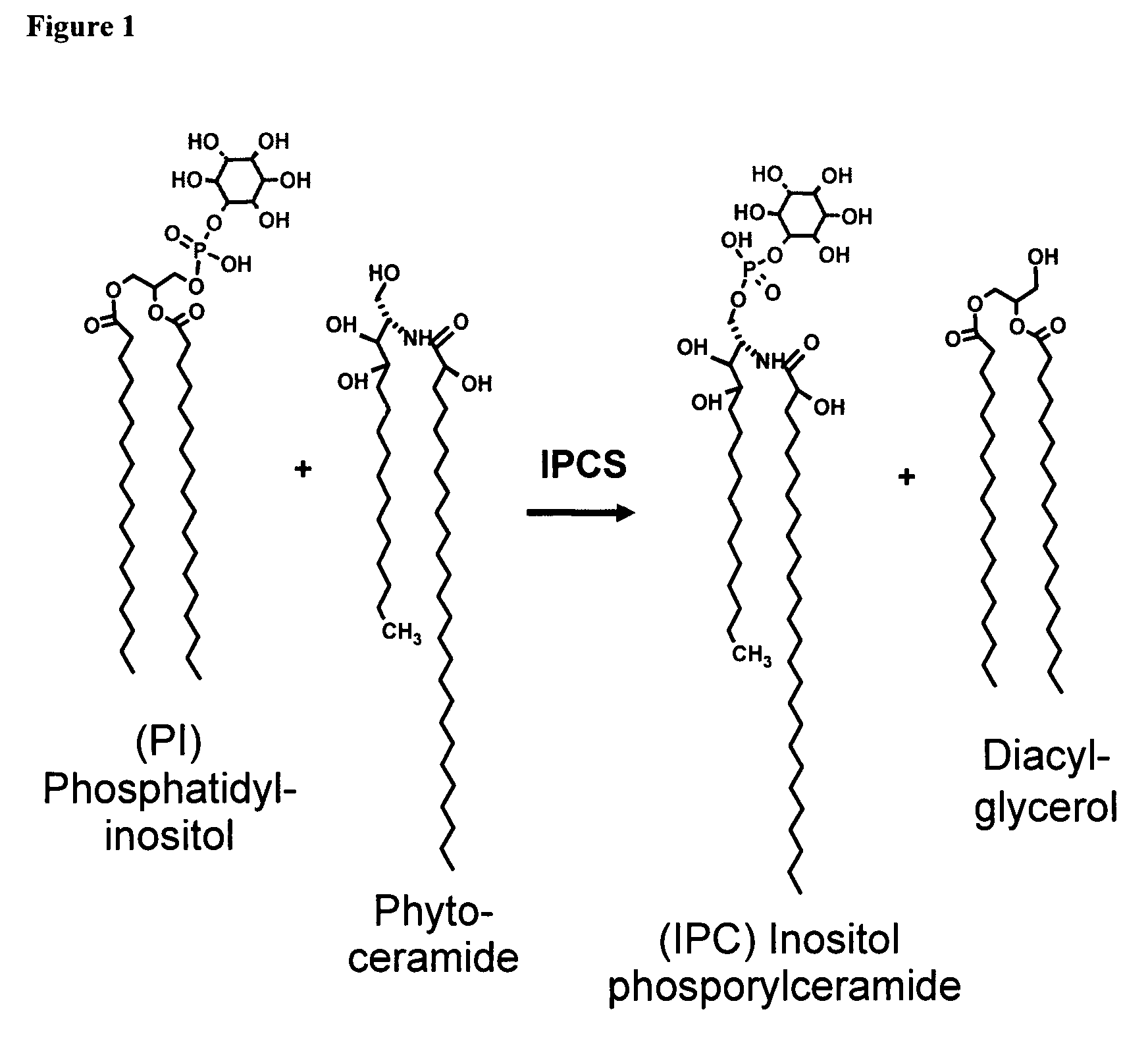Assay for inositol phosphorylceramide synthase activity
a technology of inositol phosphorylceramide and phosphoryl ceramide, which is applied in the direction of fluorescence/phosphorescence, transferases, instruments, etc., can solve the problems of slow progress in the discovery of new antifungal compounds, lag far behind the rapid growth of systemic fungal infections, and significant limitations, so as to achieve the effect of convenient operation
- Summary
- Abstract
- Description
- Claims
- Application Information
AI Technical Summary
Benefits of technology
Problems solved by technology
Method used
Image
Examples
example
Assay Procedure
[0038]The conditions described by Aeed et al. (2004) are used to isolate 10 μg (protein) of CHAPS-washed membranes which is then pre-incubated with 4 ηmoles of phosphatidylinositol (PI) in 28 μl 71.4 mM potassium phosphate buffer, pH 7.0 for 30 min in a 96-well plate. The enzymatic reaction is subsequently started by addition of 12 μl of 0.1 mg / ml C6-NBD-ceramide, in ethanol, or 2 mM CHAPS. Final assay volume is 40 μl and final reagent concentrations are 50 mM potassium phosphate, pH 7.0, 0.25 mg membrane protein / ml, 5 μM C6-NBD-ceramide, 100 μM PI, 0.3% (v / v) ethanol and 0.6 mM CHAPS. Following incubation at room temperature for 5-30 min, the reaction is stopped by adding 150 μl 96% (v / v) methanol. 150 μl 100 μM D-346-hexa-arginine in 50 mM potassium phosphate, pH 7.0, is added, and the plate is incubated at room temperature for 5 minutes. Fluorescence is subsequently measured at 600 ηm, using an excitation wavelength of 384 ηm.
[0039]The assay may be scaled up or dow...
PUM
| Property | Measurement | Unit |
|---|---|---|
| volume | aaaaa | aaaaa |
| pH | aaaaa | aaaaa |
| concentrations | aaaaa | aaaaa |
Abstract
Description
Claims
Application Information
 Login to View More
Login to View More - R&D
- Intellectual Property
- Life Sciences
- Materials
- Tech Scout
- Unparalleled Data Quality
- Higher Quality Content
- 60% Fewer Hallucinations
Browse by: Latest US Patents, China's latest patents, Technical Efficacy Thesaurus, Application Domain, Technology Topic, Popular Technical Reports.
© 2025 PatSnap. All rights reserved.Legal|Privacy policy|Modern Slavery Act Transparency Statement|Sitemap|About US| Contact US: help@patsnap.com



